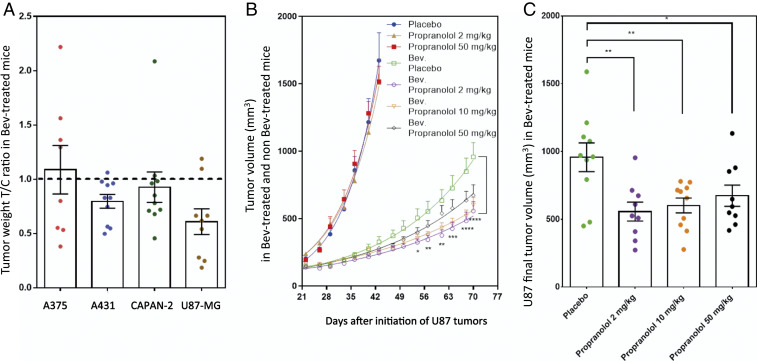Fig. 1.
Propranolol antitumor efficacy in a bevacizumab-treated mouse model. (A) A375 (melanoma), A431 (skin carcinoma), CAPAN-2 (prostate cancer), and U87-MG (glioblastoma) cell lines were subcutaneously transplanted into NSG mice. Antitumor growth activity of propranolol (2 mg/kg/day) was evaluated by the T/C ratio in mice under continuous treatment with 10 mg/kg twice a week of Bev. The T/C ratio was calculated according to the following equation: T/C ratio = tumor weight of propranolol treated mice/mean tumor weight of placebo-treated control mice. (B) U87-MG propranolol dose response (2, 10, or 50 mg/kg/day) in Bev-treated mice compared with non–Bev-treated mice. Tumor volumes were measured (mean ± SEM) at indicated times. Statistical analysis (two-way ANOVA with uncorrected Fisher's Least Significant Difference (LSD) test) compared tumor volumes in mice treated with 2 mg/kg/day of propranolol to placebo-treated mice in a Bev-treated mouse model. (C) The distribution of tumor volumes at day 75 after U87-MG cell transplantation into mice. Statistical analysis (two-tailed unpaired t test) is expressed as mean ± SEM. n = 10 mice per group; *P < 0.05, **P < 0.005, ***P < 0.0005, and ****P < 0.00005.

